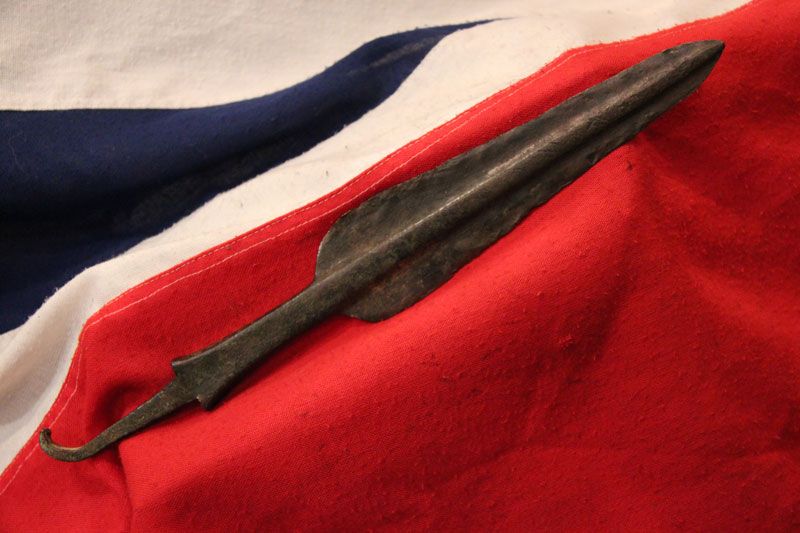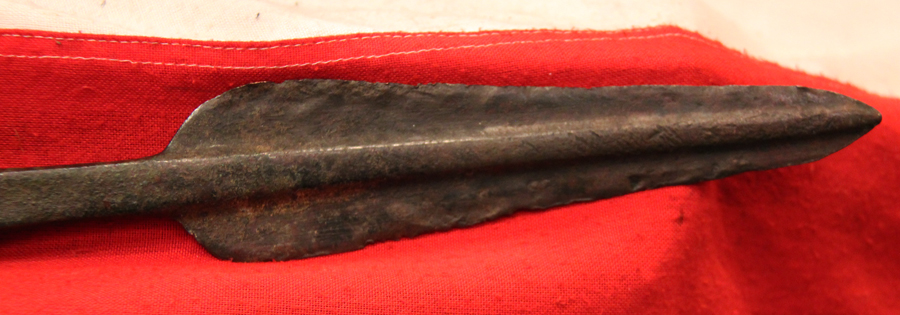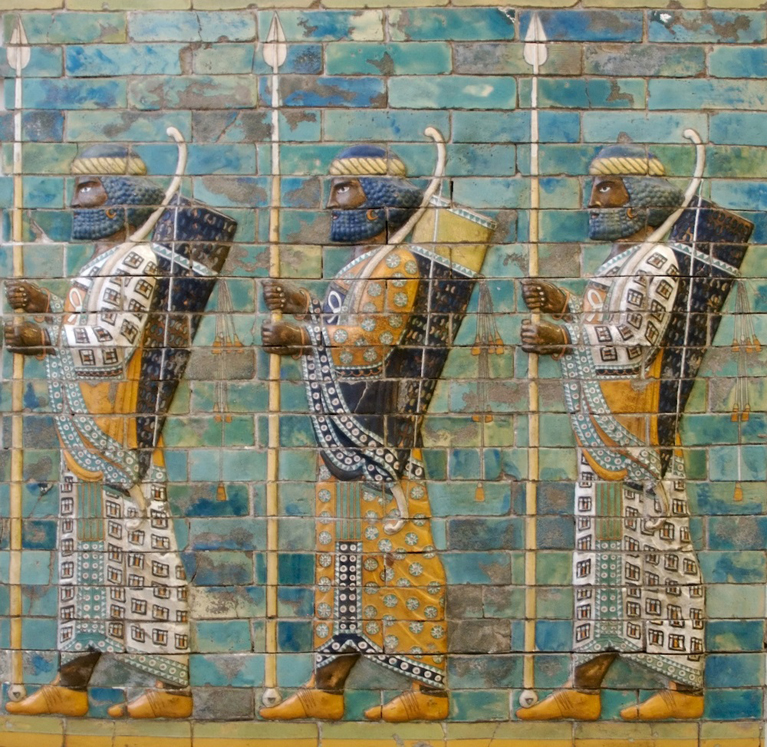A Long Bronze Age Tanged Spear From the Pre-History Era Of Achilles and Hector & The Legendary Tojan War
Another stunning spear from our ancient weapon collection acquired. Circa 1400 B.C. around 3,500 years old, with a fabulous natural aged patination and in a very sound and excellent condition for age indeed. This is a most handsome and beautiful ancient bronze tanged spear, Blade is double edged, with a flat central rib, and long tang. From one of the most fascinating eras in ancient world pre-history, the era of the so called Trojan Wars.
The ancient Greeks believed the Trojan War was a historical event that had taken place in the 13th or 12th century BC, and it is reasonably believed today that Troy was located in modern day Turkey near the Dardanelles, and the Granicus river where Alexander engaged in his first battle against the Persians around 1000 years later in 334bc.
In Greek mythology, the Trojan War was waged against the city of Troy by the Achaeans (Greeks) after Paris of Troy took Helen from her husband Menelaus, the king of Sparta. The war is among the most important events in Greek mythology and was narrated in many works of Greek literature, including Homer's Iliad and the Odyssey . "The Iliad" relates a part of the last year of the siege of Troy, while the Odyssey describes the journey home of Odysseus, one of the Achaean leaders. Other parts of the war were told in a cycle of epic poems, which has only survived in fragments. Episodes from the war provided material for Greek tragedy and other works of Greek literature, and for Roman poets such as Virgil and Ovid.
The war originated from a quarrel between the goddesses Athena, Hera, and Aphrodite, after Eris, the goddess of strife and discord, gave them a golden apple, sometimes known as the Apple of Discord, marked "for the fairest". Zeus sent the goddesses to Paris, who judged that Aphrodite, as the "fairest", should receive the apple. In exchange, Aphrodite made Helen, the most beautiful of all women and wife of Menelaus, fall in love with Paris, who took her to Troy. Agamemnon, king of Mycenae and the brother of Helen's husband Menelaus, led an expedition of Achaean troops to Troy and besieged the city for ten years due to Paris' insult. After the deaths of many heroes, including the Achaeans Achilles and Ajax, and the Trojans Hector and Paris, the city fell to the ruse of the Trojan Horse. The Achaeans slaughtered the Trojans (except for some of the women and children whom they kept or sold as slaves) and desecrated the temples, thus earning the gods' wrath. Few of the Achaeans returned safely to their homes and many founded colonies in distant shores. The Romans later traced their origin to Aeneas, one of the Trojans, who was said to have led the surviving Trojans to modern day Italy.
This spear comes from that that great historical period, from the time of the birth of known recorded history, and the formation of great empires, the cradle of civilization, known as The Mycenaean Age, of 1600 BC to 1100 BC. Known as the Bronze Age, it started even centuries before the time of Herodotus, who was known throught the world as the father of history. Mycenae is an archaeological site in Greece from which the name Mycenaean Age is derived. The Mycenae site is located in the Peloponnese of Southern Greece. The remains of a Mycenaean palace were found at this site, accounting for its importance. Other notable sites during the Mycenaean Age include Athens, Thebes, Pylos and Tiryns.
According to Homer, the Mycenaean civilization is dedicated to King Agamemnon who led the Greeks in the Trojan War. The palace found at Mycenae matches Homer's description of Agamemnon's residence. The amount and quality of possessions found at the graves at the site provide an insight to the affluence and prosperity of the Mycenaean civilization. Prior to the Mycenaean's ascendancy in Greece, the Minoan culture was dominant. However, the Mycenaeans defeated the Minoans, acquiring the city of Troy in the process. In the greatest collections of the bronze age there are swords exactly. In the Metropolitan Museum of Art is the bronze sword of King Adad-nirari I, a unique example from the palace of one of the early kings of the period (14th-13th century BC) during which Assyria first began to play a prominent part in Mesopotamian history. Swords daggers and weapons from this era were made within the Persian bronze industry, which was also influenced by Mesopotamia. Luristan, near the western border of Persia, was the source of many bronzes, such as this piece, that have been dated from around 1500 BC and later, and include chariot or harness fittings, rein rings, elaborate horse bits, and various decorative rings, as well as regular weapons, personal ornaments, different types of cult objects, and a number of household vessels. It was a great trading centre for bronze age weaponry, and all manner of bronze trade goods, that were shipped and sold due to their popularity throughout the entire region from Persia to the Mediterranean and possibly beyond.
Every single item from The Lanes Armoury is accompanied by our unique Certificate of Authenticity. Part of our continued dedication to maintain the standards forged by us over the past 100 years of our family’s trading 13.75 inches long. As with all our items it comes complete with our certificate of authenticity.
Code: 22001
1150.00 GBP






